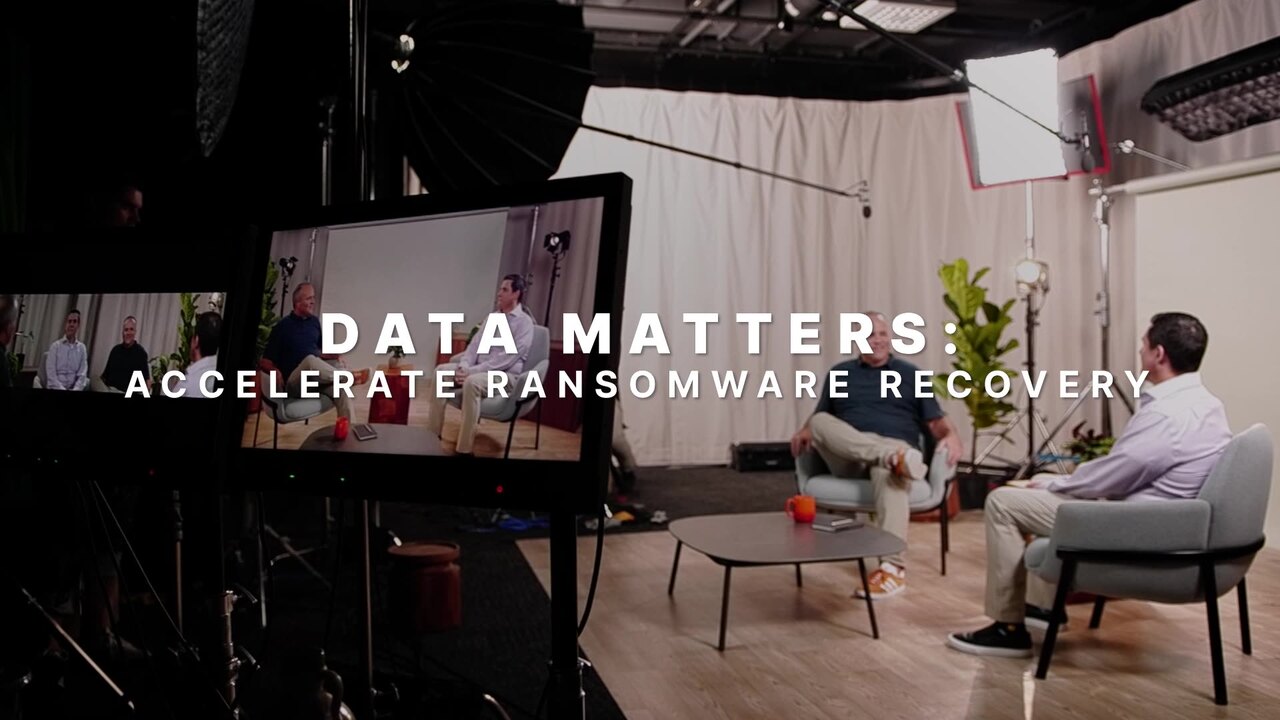00:00
Hey. Good to see you, Andy. Hey Rob, good to see you. Yeah. Around data protection, there's different objectives that customers have, right?
00:16
They're looking at recoverability of files, of folders, of objects and even the entire data center. What does Pure do to help organizations meet their needs around recovery time objectives and recovery point objectives? First, it's important to understand that data protection means
00:33
a whole lot of different things to a lot of different folks and nothing to a lot of people as well, right? But, you know, at Pure, we're really focused on the ability to recover your data at the point at which you need to recover it. So our strategy really involves a Tiered Resiliency Architecture.
00:50
So, Pure’s Tiered Resiliency Architecture, and that relies heavily on Pure’s SafeMode™ Snapshot technology. So by putting SafeMode Snapshots in place, it gives us the ability to recover at multiple different levels in a protected form throughout a customer's environment.
01:07
Now, on top of that, by building some really terrific integrations with some of our data protection partners like Commvault, Cohesity and Veeam, for instance, we enhance that ability to recover at very finite levels, also very quickly.
01:23
What types of speeds are we really talking about? Well, when you've appropriately implemented the Tiered Resiliency Architecture, so you're leveraging the snapshots the way that you could and should, you could really recover near instantly. I mean, we can literally recover a snapshot regardless of size.
01:40
So as much data as you need, as fast as you can type of command on a keyboard or click a mouse button. So really, really fast, in essence, right? Now, reality is, if you're coming off of a backup platform, we've built some very tightly coupled integrations.
01:55
So, like with Commvault, we could recover at about 270 terabytes per hour. With Cohesity, we can get into petabytes of recovery a day, same around Veeam, right? Now, contexting that, right, most competitive solutions that you'll see on the market are going to recover between two and six terabytes per hour.
02:14
What about strategies that companies should pursue relative to backups? How can a backup strategy help in the event of a ransomware attack? Well, having a clearly defined plan is absolutely critical for recovering from some sort of cyber attack. So knowing ordinality-wise, what you need to recover
02:33
first, second, third, fourth and so on is absolutely critical. So having clear line of sight to that via a backup plan is absolutely an important aspect of data security. Organizations are now starting to look towards subscription models and
02:50
as-a-service as a way to better align business objectives to SLAs. What is Disaster Recovery as-a-Service? Disaster Recovery as-a-Service is a new offering that Pure’s developing that allows our customers to consume a disaster
03:06
recovery capability in the public cloud just like you would on-premise. So instead of you having to build all those components, we literally offer those consumable as-a-service up in the public cloud in a cloud native fashion. Well, thanks, Andy, for coming and sharing some of your thoughts. It’s always interesting to hear you talk about data protection.
03:24
Thanks so much, Rob. Pleasure to be here. Thank you.
